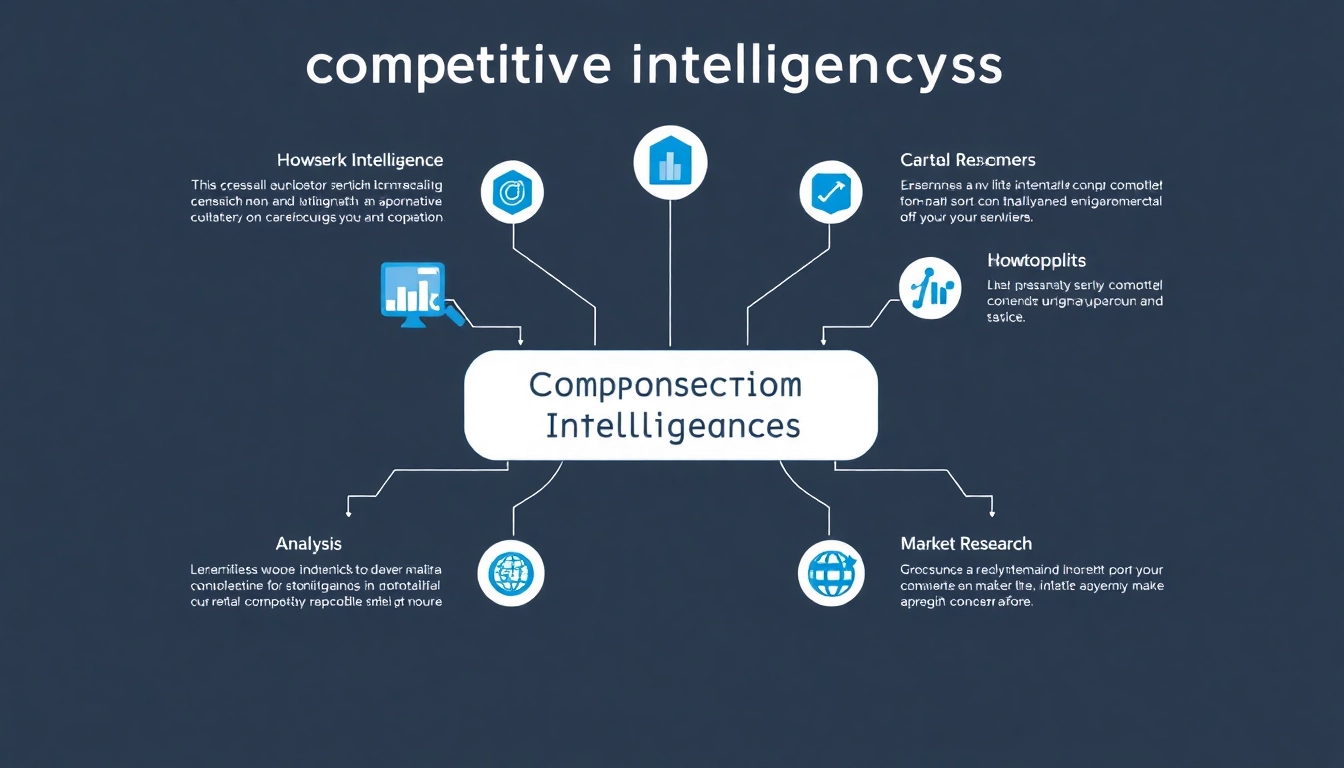Understanding the Virtual Audience System
The advent of advanced technology has transformed the way presentations, conferences, and gatherings are conducted. The Virtual Audience System is an innovative solution that allows presenters to engage with their audiences in a virtual environment. This system facilitates interaction, enhances feedback mechanisms, and fosters a sense of community among participants who may be located globally. As organizations pivot towards more digital solutions, understanding the components and benefits of a Virtual Audience System becomes essential for anyone looking to host successful events.
What is a Virtual Audience System?
A Virtual Audience System (VAS) is a technology platform designed to enable presentations, meetings, and events to take place in a virtual environment. The VAS leverages various tools such as video conferencing, live streaming, and interactive features to engage audiences who cannot physically attend an event. It not only mimics the traditional in-person experiences but also enhances them by offering innovative ways to communicate and interact with audience members.
Essentially, a VAS encompasses hardware and software solutions that facilitate virtual interactions. These systems include user-friendly interfaces that presenters and audiences can navigate with ease, ensuring that even those who are not tech-savvy can participate actively.
Key Benefits of Using a Virtual Audience System
Utilizing a Virtual Audience System comes with a multitude of advantages. Here are some of the most prominent benefits:
- Broader Reach: One of the primary benefits is the ability to reach a global audience. In-person events are limited by geographic boundaries, but a VAS can connect people from anywhere in the world.
- Cost-Effectiveness: Hosting virtual events often involves reduced costs compared to traditional events—no venue rentals, travel expenses, or accommodations are required.
- Enhanced Engagement: Advanced tools like polls, Q&A sessions, and breakout rooms can enhance audience engagement beyond what’s typically possible in physical settings.
- Analytics and Data Collection: Virtual Audience Systems often include analytical tools that allow hosts to capture audience feedback and track engagement metrics, providing valuable insights for future events.
- Flexibility: The option to record sessions means participants can revisit content at their convenience, making it particularly appealing for educational and training purposes.
Common Use Cases for Virtual Audience Systems
Virtual Audience Systems serve various industries and purposes. Here are some common scenarios where they are effectively utilized:
- Corporate Trainings and Workshops: Organizations use VAS to conduct training sessions that can easily be scaled to accommodate large groups, allowing employees to participate regardless of location.
- Webinars and Online Conferences: Businesses and educational institutions leverage VAS for hosting webinars that can attract participants from around the world, expanding their audience reach.
- Product Launches: Companies can use VAS to introduce new products to a wider audience, enabling live demos and real-time feedback from potential customers.
- Virtual Networking Events: These systems can facilitate connections among attendees, allowing for meaningful networking opportunities that can often lead to business collaborations.
- Social Events: From virtual weddings to birthdays, VAS provides creative tools to bring people together for celebratory events, regardless of distance.
Setting Up Your Virtual Audience System
Technical Requirements for Implementation
Successfully implementing a Virtual Audience System requires attention to technical details. Here are the primary components you need to consider:
- Hardware: Ensure that you have the necessary hardware, including high-quality webcams, microphones, and speakers. A powerful computer is essential for managing software and handling streaming tasks.
- Software: Choose reliable software that supports video conferencing and integrates well with your chosen engagement tools. Platforms like Zoom, Webex, and Microsoft Teams are standard options.
- Internet Connection: A stable and high-speed internet connection is crucial. This is typically at least 25 Mbps download speed for seamless HD video streaming.
- Technical Support: Consider having a technical support team ready to troubleshoot any issues that may arise during the event.
Best Practices for Configuration
Once you have the technical requirements in place, configuring your Virtual Audience System effectively is key. Here are some best practices:
- Test Your Setup: Conduct rehearsals before the main event to test all audio and video equipment. This will help you identify and fix any issues ahead of time.
- Optimize Your Environment: Find a quiet, professional-looking space to conduct your event, minimizing potential distractions or interruptions.
- Engagement Features: Make sure to configure interactive features like polls, Q&A functionality, and breakout rooms to enhance audience participation.
- Accessibility: Ensure your setup is accessible to all participants, including provisions for those with disabilities, such as closed captioning options.
Choosing the Right Tools for Your Virtual Audience
Selecting the right tools is essential for maximizing the effectiveness of your Virtual Audience System. Here are some categories and examples of tools to consider:
- Video Conferencing Tools: Choose reliable platforms like Zoom or Microsoft Teams for basic communication. These tools should cater to your audience size and allow for necessary interactive elements.
- Engagement Tools: Platforms like Slido or Mentimeter can help facilitate audience engagement through polls, quizzes, and feedback collection.
- Streaming Services: For larger events, consider streaming platforms that can handle high traffic and provide quality HD streaming, such as Vimeo Live or Restream.
- Analytics Tools: Use software like Google Analytics or HubSpot to track engagement metrics and gather data analytics on participant behavior.
Engagement Strategies in Virtual Settings
Interactive Features to Incorporate
Engagement is a cornerstone of successful virtual events. Incorporating interactive features can significantly improve participant experience. Some effective interactive features include:
- Live Chat: Establish a platform for real-time interaction among attendees. This allows participants to ask questions, share comments, and network throughout the session.
- Polling and Surveys: Integrate polls to gather immediate feedback or gauge participant interest on specific topics, allowing for an adaptive presentation style.
- Breakout Rooms: Create smaller discussion groups for deeper engagement. This is especially effective for workshops or training sessions where personalized interaction is beneficial.
- Gamification: Introduce gaming elements such as quizzes and contests to enhance participation. Prizes can encourage engagement and create a fun atmosphere.
Utilizing Polls and Surveys Effectively
Polls and surveys are powerful tools for enhancing audience engagement. Here are some strategies to use them effectively:
- Timing: Introduce polls at critical points during the event, such as after key presentations or during breaks, to maintain engagement.
- Relevance: Ensure the questions are relevant to the content being discussed. This will encourage participation and show that you value the audience’s input.
- Incentivizing Participation: Consider offering incentives for participating in polls, such as entry into a contest or a small giveaway.
- Feedback: After the event, share the results of the polls with participants to demonstrate that their opinions counted and to encourage future engagement.
Encouraging Audience Participation in Real-Time
Encouraging real-time participation can significantly enhance the experience for both the host and the audience. Here are practical ways to boost participation:
- Icebreakers: Start with an icebreaker activity to create a friendly environment. This could be a fun question or a quick poll that invites everyone to engage right from the beginning.
- Utilizing Names: Address participants by name when responding to questions or comments. This personal touch increases engagement and makes attendees feel valued.
- Real-Time Challenges: Introduce challenges or tasks that require audience participation, promoting an environment of collaboration and engagement.
- Direct Questions: Regularly invite questions or comments during the presentation, ensuring that people feel comfortable to share their thoughts openly.
Measuring Success with Your Virtual Audience System
Key Performance Indicators (KPIs) to Track
Measuring the effectiveness of your Virtual Audience System is essential for continual improvement. Here are some key performance indicators (KPIs) to track:
- Attendance Rates: Monitor how many registered participants actually attended the event compared to how many signed up. Low attendance rates may indicate a need for better promotion.
- Engagement Metrics: Track metrics such as chat participation, poll responses, and breakout room activity to gauge participant involvement throughout the event.
- Feedback Scores: Utilize surveys to gather feedback on participant satisfaction before, during, and after the event, allowing you to pinpoint areas for improvement.
- Lead Generation: Track any new leads generated through the event, especially if it’s a corporate-focused gathering, to evaluate its business impact.
Gathering and Analyzing Feedback
Collecting and analyzing feedback is vital for refining your virtual events. Here’s how to do it effectively:
- Post-Event Surveys: Send out surveys immediately following the event to capture fresh feedback while the experience is still top-of-mind for participants.
- Follow-Up Engagement: Keep the conversation going with attendees in the days following the event. This can be done via emails thanking them for their participation and encouraging further feedback.
- Analyze Qualitative and Quantitative Data: Look at both the numbers and the comments provided in feedback forms to get a holistic view of your event’s success and areas needing improvement.
Adjusting Strategies Based on Performance Metrics
After gathering feedback, assessing performance metrics allows you to tailor your strategies. Here are key steps to follow:
- Identify Patterns: Look for common themes or issues that arise from participant feedback. Are there specific areas of content that consistently receive low scores?
- Engage Team Brainstorming: Collaborate with your team to analyze feedback and develop actionable steps that address the concerns raised by participants.
- Test Changes: Implement changes in a pilot setting before rolling them out in future events to gauge effectiveness and adjust if necessary.
- Continuous Improvement: Treat each event as a learning opportunity. Keep refining your approach to create even more compelling and engaging virtual experiences.
Future Trends in Virtual Audience Systems
Emerging Technologies Impacting Engagement
The landscape of virtual audience systems is evolving rapidly with technological advancements. Here are some emerging trends that are set to impact the future of virtual engagement:
- Artificial Intelligence (AI): AI is beginning to play a role in personalizing attendee experiences, curating content preferences, and predicting engagement behaviors in real-time.
- Augmented and Virtual Reality (AR/VR): These technologies can create immersive experiences for virtual audiences, bridging the gap between the physical and digital worlds, allowing attendees to feel as though they are ‘present’ at an event.
- Blockchain Technology: This can enhance security and privacy concerns during virtual events, ensuring that participant data is kept safe while fostering a trustworthy environment for engagement.
- Enhanced Data Analytics: The rise of sophisticated analytical tools will enable organizers to derive more actionable insights from audience behavior, allowing for increasingly personalized and adaptive event experiences.
Predictions for the Evolution of Virtual Events
As we look forward to the evolution of virtual audience systems, several key predictions can be made:
- Greater Integration of Hybrid Models: The future of events will likely combine both in-person and virtual elements, allowing more flexibility and broader outreach, thus accommodating diverse audience preferences.
- Increased Focus on Accessibility: The push for inclusivity in virtual settings is expected to grow, leading to enhancements in technologies and practices that ensure all individuals, regardless of ability, can participate fully.
- More Interactive and Personalized Experiences: Enhancements in technologies will allow for richer, more engaging interactions that cater directly to individual audience needs and preferences, increasing overall satisfaction.
Preparing for Changes in Audience Expectations
As the virtual landscape evolves, so will audience expectations. To prepare for these changes, consider the following strategies:
- Stay Updated: Regularly research trends and innovations in the virtual engagement space to ensure that your offerings are up-to-date and align with audience preferences.
- Encourage Feedback: Foster a culture of feedback not only post-event but also throughout the planning stages to ensure that audience input shapes your offerings effectively.
- Be Adaptable: Be prepared to pivot and experiment with new formats and approaches to keep your events fresh and relevant to changing audience needs.



